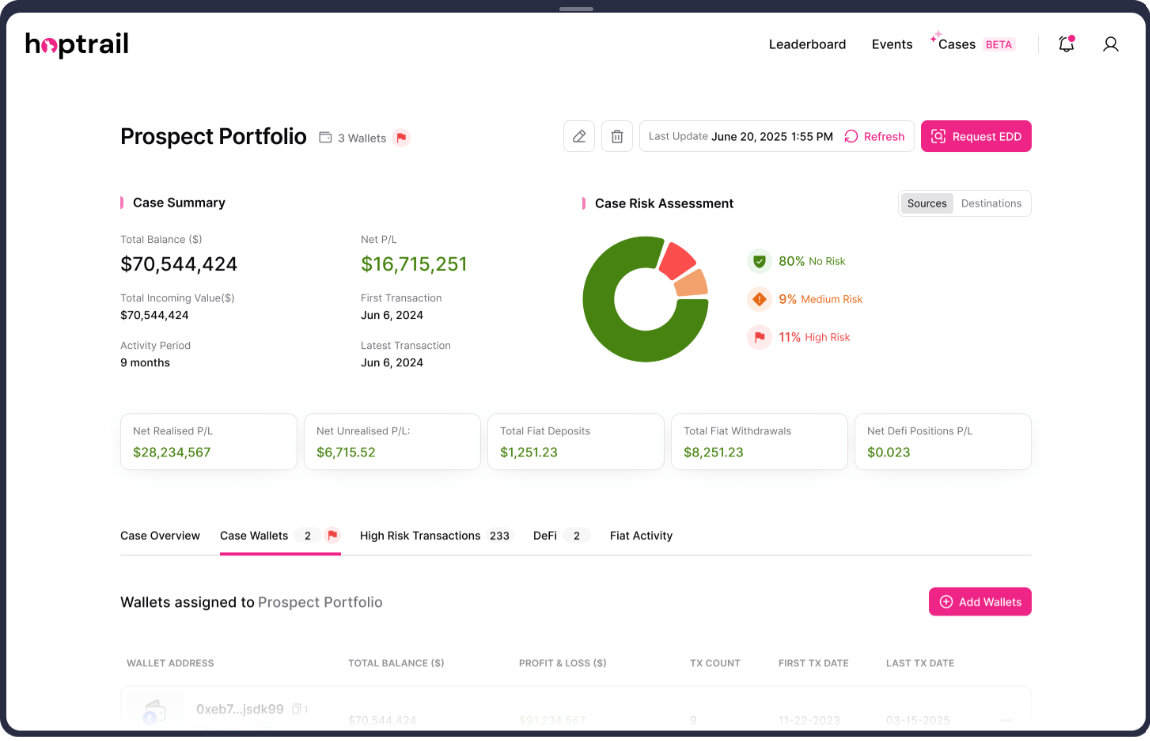Hydra: A Beast of the Darknet

Last week German authorities announced the shutdown of Hydra, the largest and longest running darknet marketplace. Authorities confirmed the seizure of more than $25 million in Bitcoin, 17 million customer accounts, and 19,000 vendor accounts, making one of the most significant seizures in dark web history.
Hydra was a Russian language marketplace known to operate in Russia, Ukraine, Belarus, Kazakhstan, Armenia, Azerbaijan, Moldova, Kyrgyzstan, Uzbekistan, and Tajikistan. At its peak, its annual turnover was estimated at $1.3 billion – a staggering amount for an e-commerce platform, let along one specialising in illicit goods.
So what made Hydra so successful? We identify four aspects that made Hydra the monster it was.
1. Business Model
The most important feature underpinning Hydra’s success was the platform’s business model. Account sign-up functioned like many other marketplaces in which goods were purchased through a conventional escrow system. However, the actual process of collecting goods differed on Hydra. Instead of mailing them, the seller would send coordinates to a pre-fixed dead drop where the buyer could collect the so-called “Treasures”.
Within Hydra, there were ‘Master Treasures’ and ‘Treasures’ focused on goods for suppliers and consumers respectively. Accordingly, the market was able to control an entire supply line internally while ensuring high customer satisfaction through dead drops.
There were also strict rules around withdrawals. For example, funds could only be withdrawn in Russian roubles and delivered to vendors through couriers to reduce the traceability of blockchain transactions. Although inconvenient for many sellers, the system not only ensured customer retention but provided better – albeit more cumbersome – privacy guarantees for vendors. The obvious downside is that a buyer had to be physically located in one of Hydra’s operating countries unless purchasing digital goods.
2. Privacy
As with all other markets, Hydra was only accessible through the Tor browser. But as the closure of rival platforms has revealed, protection offered by Tor is not always sufficient.
Hydra boosted privacy by supporting payments in Monero (XMR), a privacy coin which operates an encrypted blockchain model. In recent years marketplaces have switched to (or enabled) XMR as the crypto of choice. For those that choose to use Bitcoin, Hydra featured an integrated Bitcoin mixing service. Users would deposit coins into the mixer and after a set period would receive new “clean” coins.
3. Offensive Tools / Political Links
It is strongly suspected on darknet discussion forums that Hydra has been responsible for multiple DDoS (distributed denial of service) attacks on rival marketplaces. Among others, these included the apparent attack on and forced closure of Russian based rival RAMP in 2017. Hydra used these attacks to build market share across Russia and the CIS, providing it with the resources to reinvest in security and other privacy-focused features.
For a long time unconfirmed rumours circulated of links to the Russian government. Although no evidence will likely surface to substantiate these claims, it may explain why Hydra enjoyed such a long reign as the world’s dominant marketplace, operating relatively unencumbered. The timing of its closure, led by German law enforcement, presents separate questions as to how and where Hydra’s operators were set up, but we’d expect more details to emerge in the coming months.
4. Vision
In 2019, Hydra announced a $150 million initial coin offering to launch a new Western-facing marketplace, Eternos. The platform was set to be powered by Eternos’ native token in a structure mirroring large fund raises in the DeFi space. In addition to a marketplace, Hydra stated its intention to integrate a crypto exchange, an encrypted messaging system, and an AI-powered dispute resolution system into Eternos.
Although the project never took off – its launch in December 2019 was ultimately scrapped – the idea itself was audacious and showed planning and strategy that many other marketplaces lacked.
Hydra’s combination of technology, on-chain privacy, and offline features made it unique among darknet marketplaces. Its focus on core markets - in which it felt comfortable operating - gave it additional scope to act with impunity, allowing it to become a beast of the illicit online trade.
No doubt current and future operators will be watching with interest.

Crypto HNWIs: How did they make their fortune?

Cases: new source of wealth capabilities and upcoming features

Why we built Cases: A personal note on solving the crypto source of wealth headache
Subscribe to the Hoptrail newsletter
Sign up with your email address to get the latest insights from our crypto experts.
